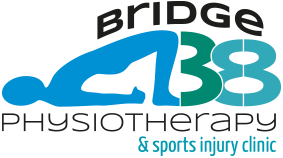With the Autumn marathon season just around the corner, no doubt many of you are starting to ramp up the miles. Most will be lucky enough to avoid the physiotherapists treatment couch, however, it is this time of the year physiotherapists start to see a gradual rise in running related injuries.
Part 1 of this blog will look at how runners can avoid injury by examining what load management means in terms of training.
Part 2 will look at effects of running form on injury and simple changes that will improve the efficiency of how you run.
Load Management:
The most important strategy to prevent injury is to manage the load placed upon the bodies tissues. Runners doing too much too quickly is a common problem physiotherapists encounter daily. The body cannot cope with the sudden extra strain being placed on tissues such as bones, tendons, muscles and ligaments. The musculoskeletal system needs time to adapt and get stronger.
LOAD MANAGEMENT is key in terms of volume, intensity, and frequency.
Volume:

A sudden increase in mileage is one of the most frequent reasons an injury can occur. The usual story is “I’ve entered a half marathon and have started to increase the mileage”. Unfortunately when questioned most runners have increased this far too quickly and are often doubling their mileage in one to two weeks.
A useful guide is to only increase the weekly total mileage by no more than 10%. If your total volume is quite low less than 10 miles per week, you may be able to cope with an increase of up to 20%. A further tip is to build in recovery weeks to your plan. This might consist of a build period of gradually increasing mileage over 3 weeks then reducing the volume by 10-20% on the 4th week, before building again.
Intensity:

Intensity is how hard you train. This will include sessions that involve speed work such as intervals on the track, hill repetitions or running sessions at near race pace. To minimise injury follow the 80:20 rule: 80% done at low intensity and 20% done at high intensity is a good guide. For most of us that might only mean one high intensity session per week. If you want to do more of this type of training you would need to gradually introduce this over a period of weeks. Many people think that if they run every session hard and fast they will get faster in the long run. This is generally not the case and most of the time will lead to an overuse injury.
Frequency:
Frequency and Volume are often related as the more often you run the more mileage you will do. The more often you run the less time the body has to recover. Frequency needs to be built up gradually over time. When increasing frequency think back to your total volume. To begin with you may need to reduce mileage on some of your runs to avoid a sudden increase in volume. Once you have established an increase in frequency then you can start to increase the volume again.
Key Message:
The key message to avoid having to take a visit to the physiotherapists treatment couch is to plan your sessions. Work out your total volume, when to input a hard session(s) and plan in recovery time. Keeping a track of this will really help you to stay focused at what you are aiming to achieve and not get carried away which may lead to injury.
